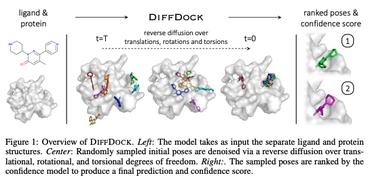DeepRLI: A Multi-objective Framework for Universal Protein--Ligand Interaction Prediction
Protein (receptor)--ligand interaction prediction is a critical component in computer-aided drug design, significantly influencing molecular docking and virtual screening processes. Despite the development of numerous scoring functions in recent years, particularly those employing machine learning, accurately and efficiently predicting binding affinities for protein--ligand complexes remains a formidable challenge. Most contemporary methods are tailored for specific tasks, such as binding affinity prediction, binding pose prediction, or virtual screening, often failing to encompass all aspects. In this study, we put forward DeepRLI, a novel protein--ligand interaction prediction architecture. It encodes each protein--ligand complex into a fully connected graph, retaining the integrity of the topological and spatial structure, and leverages the improved graph transformer layers with cosine envelope as the central module of the neural network, thus exhibiting superior scoring power. In order to equip the model to generalize to conformations beyond the confines of crystal structures and to adapt to molecular docking and virtual screening tasks, we propose a multi-objective strategy, that is, the model outputs three scores for scoring and ranking, docking, and screening, and the training process optimizes these three objectives simultaneously. For the latter two objectives, we augment the dataset through a docking procedure, incorporate suitable physics-informed blocks and employ an effective contrastive learning approach. Eventually, our model manifests a balanced performance across scoring, ranking, docking, and screening, thereby demonstrating its ability to handle a range of tasks. Overall, this research contributes a multi-objective framework for universal protein--ligand interaction prediction, augmenting the landscape of structure-based drug design.
PDF Abstract


